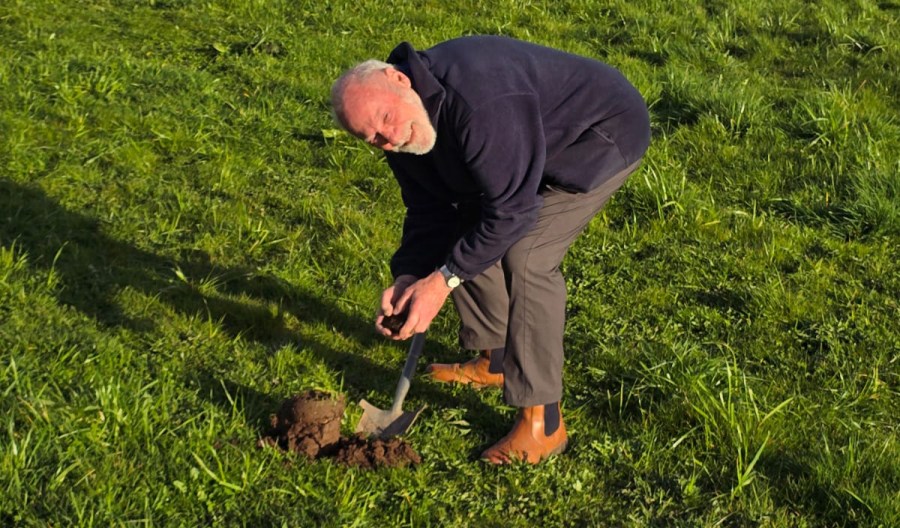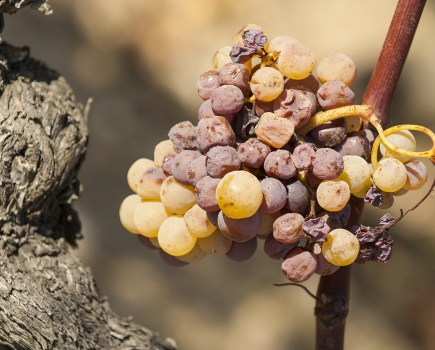John, how did you get started in agronomy?
After leaving agricultural college, I was a farm manager for 20 years working with livestock and arable, and then worked for an American specialist nutritional company in the UK. So, I have always been involved in agronomy.
How did you get involved with vineyards?
I was asked to look at a sick vine whilst exhibiting at the Royal Show, which ended up with me visiting the vineyard in question. It all started from there, which was 23 years ago and many vineyards since.
Why not enjoy a well earned retirement?
Why should I retire when growers are finally paying attention to the importance of understanding the soil’s requirements? My work is not done yet with more to understand and pass on.
What are the key considerations early in the growing season?
The secret to early establishment and healthy growth starts with the application of a balanced fertiliser formulated in response to previous soil and tissue analysis results. Always replace those nutrients removed by the previous crop and redress any underlying deficiencies. The application of a high rate sulphur/copper mix before bud burst can reduce bud mite damage, then an application of a copper/boron/molybdenum complex will maximise embryo formation resulting in optimum fruitful buds. Under vine weed control, pre-bud burst should be done to reduce competition for nutrients to the vines.
What key nutrients are often overlooked when growing grapes?
It is essential to understand the vines’ requirements at each key growth stage. This will have a significant effect on the ability of the vine to produce optimum healthy disease-resistant growth, both for the leaf area and, subsequently, berry numbers and bunch fill. Any nutrients applied must be done before each growth stage, ideally 10 to 14 days in advance, to optimise availability when reaching the specific growth stage. Boron/molybdenum complex foliar application has a well-documented response to increasing pollen production and viability, thus optimising flowering and fruit set. It must be accepted that if any nutrient is in deficiency the optimum production will be compromised. Therefore, it is essential that soil samples be taken every three years, and tissue or petiole samples taken pre-flowering every season to enable any fine-tuning of the nutrient programme.
With your crystal ball where do you see the future of agronomy heading?
The future is bright for agronomy as we aim to reduce our reliance on agrochemicals and chemical fertilisers by re-balancing our soils, both nutritionally and physically. This is done by creating well-drained aerobic and balanced organic soils, which will allow optimum nutrient retention without compromising availability. This will help create sustainable soils for the long-term future of our industry.
What has been your hardest harvest for disease?
The most challenging year for me was 2012 when it rained throughout the growing season. This made spraying almost impossible resulting in a massive increase in Phomopsis on the canes, and powdery and downy mildew and botrytis having a field day. However, those who persisted in taking any and every opportunity to spray did manage a crop.
How do you get the best return on investment from a spray programme?
Spray programmes, however good, can only be successful if the sprayer and operator are up to the job. It is essential for the sprayer to be fully functional and correctly calibrated for the products being applied. The operator must also hold a current certificate of competency relating to the sprayer type. It is essential that neither over nor under-application is done, as this will build up resistance to the efficacy of the products applied. Spray programmes must take into account harvest intervals, the number of applications per product, the use of differing actives relating to the specific disease, and targeting spraying of the fruit zone only in certain cases. Correctly targeted growth stages for both fungicides and nutrients will maximise the potential for healthy, balanced production. Correct canopy management can be more than half the battle. Maximise airflow – you should be able to see through three rows. Air is free, so use it!




